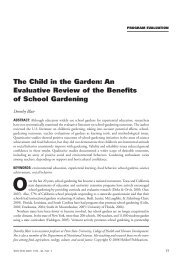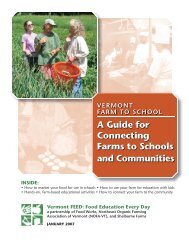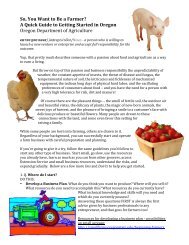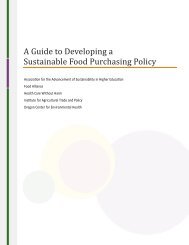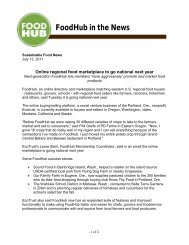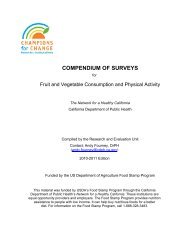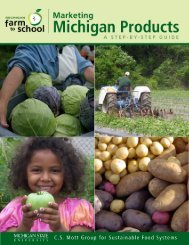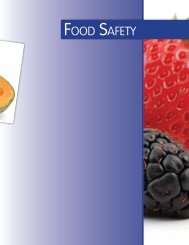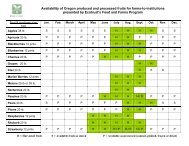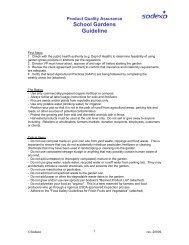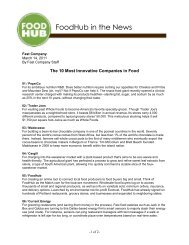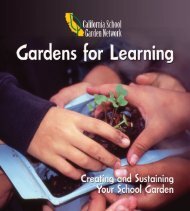eval report cover.indd - New Jersey Farm to School Network Wiki
eval report cover.indd - New Jersey Farm to School Network Wiki
eval report cover.indd - New Jersey Farm to School Network Wiki
Create successful ePaper yourself
Turn your PDF publications into a flip-book with our unique Google optimized e-Paper software.
Comparative Research:Nutrition Education and Fruit & Vegetable ConsumptionGetting children <strong>to</strong> eat more fruit and vegetables: A systematic review. Knai C,Pomerleau J, Lock K, and McKee M. Preventive Medicine 42(2006): 85-95.Review of <strong>Farm</strong> <strong>to</strong> <strong>School</strong> Evaluation LiteratureTh is systematic review of fifteen studies assessed the impacts of nutrition educationinterventions <strong>to</strong> increase fruit and vegetable consumption in children. Th e authors<strong>report</strong>ed an increase in the range of 0.3 servings <strong>to</strong> 0.99 servings/day. Th e studies includedin this review focused on youth between the ages of 5-18 that had a control group andused fruit and vegetable consumption as the primary measurement outcome.tion who could locate grains increased from 16% <strong>to</strong> 34%. Four out of five studentsreceiving the farm <strong>to</strong> kindergarten program were aware of the recommendednumber of fruit and vegetables servings they should be eating every day; whileonly one of two students in the control group knew the answer. In the schoolsreceiving farm <strong>to</strong> school programming, there was a twofold increase in thepercentage of children who could identify foods they should only eat occasionally,compared <strong>to</strong> a 10% increase in correct responses from students in controlschools. Ninety percent of students who had received nutrition education couldidentify a healthier option <strong>to</strong> buy in a supermarket as compared <strong>to</strong> only 62% inthe pre-test. This program also showed an increase in knowledge about readingfood labels for both foods and beverages. 26,27Source of Food►►Prior <strong>to</strong> curriculum implementation, about 50% of students participating in theFFF-IL program were aware that all fruits and vegetables do not grow year round.Th is percentage increased <strong>to</strong> 57.9% following curriculum implementation. 43,44Th e FTK-PA <strong>eval</strong>uation reveals a statistically significant difference in knowledgeabout the journey of food from farm <strong>to</strong> fork among students who received nutritioneducation as part of the farm <strong>to</strong> school program as compared <strong>to</strong> those thatdid not. Correct responses for where food comes from more than doubled from30 Bearing Fruit: <strong>Farm</strong> <strong>to</strong> <strong>School</strong> Evaluation Resources and Recommendations



